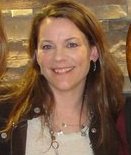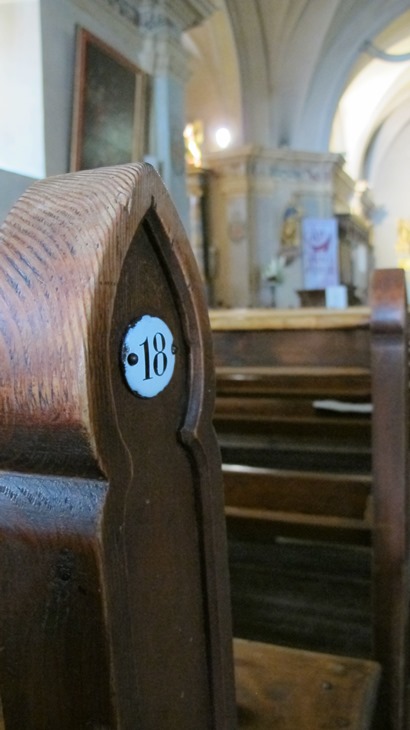The Butler MFA program is growing faster than ever, and in the early summer that growth paid dividends to a handful of students who got to spend three weeks in writerly nirvana, attending intensive workshops in Chamonix, France. Part graduate workshop, part scenic vacation, part mad-science experiment, the first Chamonix Summer Writing Program was a resounding success– so much so that it is being offered again, now a permanent offering to Butler students.
 In the final part of Chamonix Memorixs, we hear from Lisa Renze-Rhodes. Just like Farhad, Lisa treated her time in Chamonix as an exploration or expedition, though maybe not quite so literally. The questions she asks herself in the beginning are ones I’m sure we’ve all asked ourselves in our broader MFA experience. And hopefully her answers in the end are in kind.
In the final part of Chamonix Memorixs, we hear from Lisa Renze-Rhodes. Just like Farhad, Lisa treated her time in Chamonix as an exploration or expedition, though maybe not quite so literally. The questions she asks herself in the beginning are ones I’m sure we’ve all asked ourselves in our broader MFA experience. And hopefully her answers in the end are in kind.
Posted distances between hiking landmarks, hours of a store’s operation, the weighing of cheese or chocolate — all remind Chamonix Valley visitors that this world works on a kind of mountain measure that will not be standardized. And pity the misguided tourist who doesn’t embrace this practice of approximations quickly. It’s an omnipresent quirk that threatened to amplify doubts I’d already been rehashing in the fewer than 24 hours I’d been on site. Should I have spent the money to come? Should I have changed my status at work from fulltime to part-time to accommodate this class? Was this the right time for me to be doing this?
To quell the questions, I did as I’ve always done during times of uncertainty, and headed to the one place where I knew I could breathe easier. Tucked off the main shopping plaza, directly across the street from Chamonix’s oft-shuttered Bureau de Tourism, sits St. Michel Church. Fortunately for me, it didn’t follow the standardized time measure seemingly popular in the region. As I approached from the front, I reached into my backpack for my Canon and captured a few exteriors of the scene before me. It would have easily looked at home on the set of a Disney movie. The snow-capped mountains came complete with a halo that would have felt heavy handed, had it not been real. After a few wideshots, verticals, and close-ups that attempted to play off the light, I ducked inside.
 It was cool and quiet on that Monday afternoon. I moved down the aisle, genuflected, made the sign of the cross, and chose a seat in a pew that afforded me a decent vantage point of the structure’s art and architecture. Sun hitting the windows sprayed a kaleidoscope of color across the stone floor, and there was just a hint of incense in the air. I couldn’t decide if it was seeping out of the walls after centuries of use, or if a funeral was held earlier in the day, so I erred on the side of funeral and offered a quick prayer for whomever it was who may have passed.
It was cool and quiet on that Monday afternoon. I moved down the aisle, genuflected, made the sign of the cross, and chose a seat in a pew that afforded me a decent vantage point of the structure’s art and architecture. Sun hitting the windows sprayed a kaleidoscope of color across the stone floor, and there was just a hint of incense in the air. I couldn’t decide if it was seeping out of the walls after centuries of use, or if a funeral was held earlier in the day, so I erred on the side of funeral and offered a quick prayer for whomever it was who may have passed.
Churches, well, all places of worship, are a touchstone for me — especially when I’m traveling. Not only their existence, but, more importantly really, their survival, which says so much about the people who created a community. It says not only that they lived, but that they thought enough of a place to build a life. The gilded altar of St. Michel reflects the village tableau microcosm: outsiders ventured to this valley, couples wed, children were welcomed, and loved ones were mourned after their passing. It’s yet another reminder that while languages, customs, and religions differ between nations and peoples, the fact is we’re really not all that different.
I added evidence to my belief, at least enough to satisfy my unexacting standards, when I spotted an elderly woman dropping a coin into a small collection box at the side of a bank of prayer candles. She had dressed purposefully for the outing: a black skirt and pumps, and what appeared to be a cashmere cardigan, cream, over an ivory blouse. On her head, a black lace chapel veil that more than anything else about her, spoke to her age. She took a long, thin match from a cup of sand, and held it to a flame, the worn carbon tip slow to pop to life. Once her votive took hold, she knelt, slowly but still kneeling, made the sign of the cross and then the needs of her heart became lost to me. Other visitors came, a few lit candles, and the woman prayed on. I took my turn, and just as I was finishing, the woman rose, crossed herself again, and headed back up the aisle. I followed her out into the light.
The doubts I had didn’t disappear in that moment. They lingered for a few days and nights. Going to that place of exploration was a tough decision, but it was not only so obviously right, I believe it was required. It meant trusting in something I couldn’t quite name, but that I know exists, the evidence apparent in the words on the paper or in the ideas that arrest my mind. It meant stoking a passion that is challenging and demanding in ways I’ve never imagined, but can’t fathom living without. It was honoring the craft that many will never understand but is the very thing that defines me. It was fantasy and wonder. It was work and toil. It was fascination and delight. It was a leap of faith that eventually every believer has to trust. And then to take.